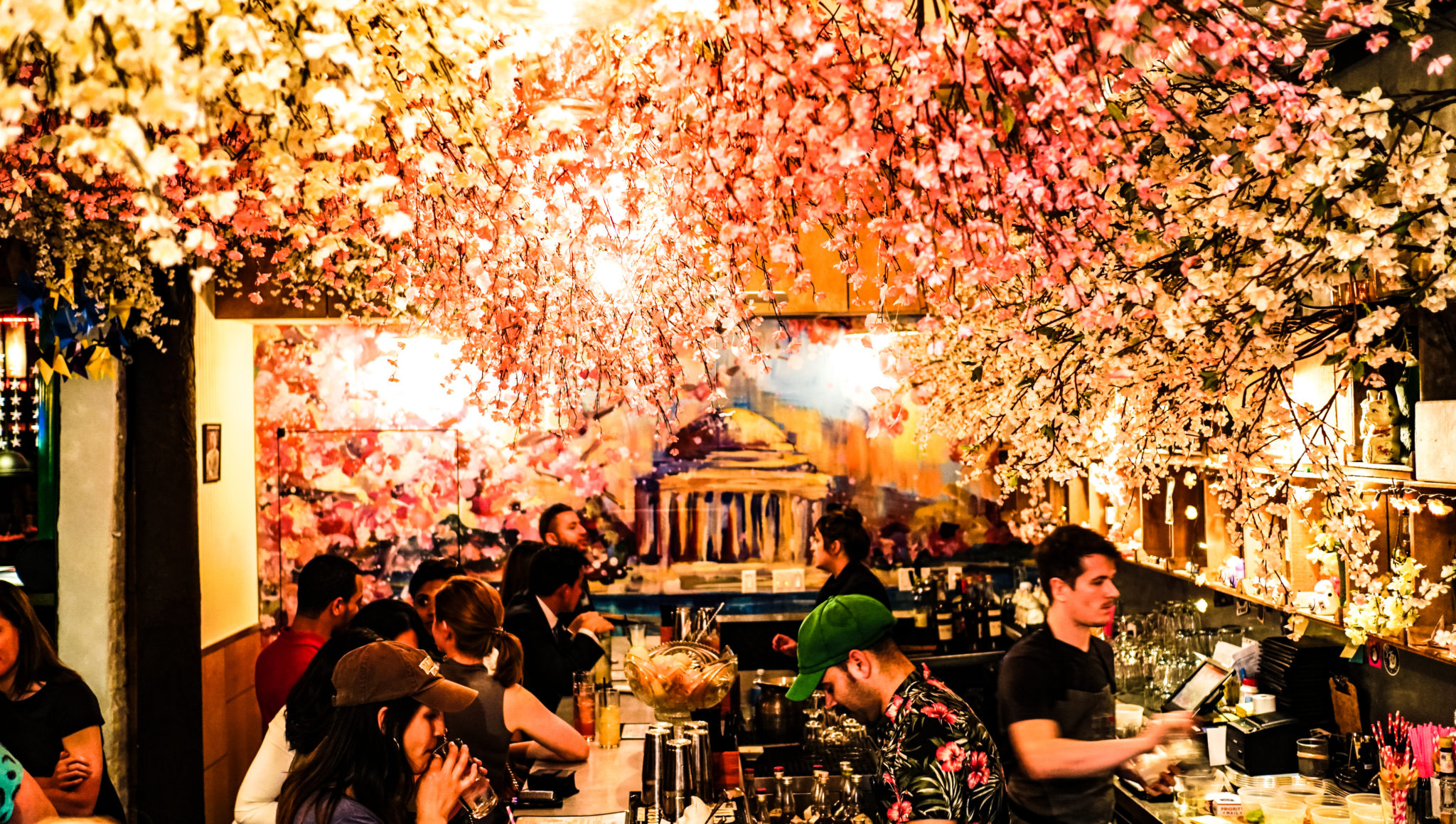Liquor licenses for bars, clubs, and restaurants in D.C. have increased by over 50 percent since 2008 and expanded the footprint of the District’s nightlife, broadly in step with gentrification patterns.
In 2008, D.C. had just over 800 bars, clubs, and restaurants. In 2016, there were nearly 1,300. Over this general time span, the District population grew by over 100,000 (from 580,236 residents in 2008 to 681,170 in 2015), and its median income rose from $57,936 to $75,628.[1] The influx of well-off professionals with money to spend led to a boom in the city’s nightlife and restaurant scene. The map below shows liquor licenses for bars, clubs, and restaurants from 2008 to 2016. Use the slider to see how D.C.’s nightlife has grown across the time period.
Mapping D.C. Nightlife, 2008-2016
Liquor license locations for bars restaurants and clubs
Created by Kate Rabinowitz / DataLensDC for the D.C. Policy Center
Not only has the number of liquor licenses for bars, clubs, and restaurants drastically grown, but the locations of “nightlife hubs’” have expanded as well. East of the Anacostia there continues to be only a handful of nightlife establishments. But most other D.C. neighborhoods have seen growth in liquor licenses. The fastest growth has been in neighborhoods that are rapidly gentrifying; neighborhoods that underwent significant demographic change, like Logan Circle, Shaw, and the H St. Corridor, all saw the number of nightlife establishments more than double across the period. Neighborhoods that experienced less demographic change across the period, like Woodley Park or Chevy Chase, saw only modest increases in nightlife. And as I’ll explore in a later piece, liquor license moratoriums in Adams Morgan, Dupont Circle and Glover Park have held down growth in those neighborhoods.
Gentrifying neighborhoods see substantial nightlife growth
Liquor licenses per neighborhood, 2008 and 2016 (hover for neighborhood counts)
Created by Kate Rabinowitz / DataLensDC for the D.C. Policy Center
The growing nightlife options across D.C. are emblematic of the city’s increasing vibrancy, wealth, and cultural status. However, like all hallmarks of gentrification, D.C.’s expanding nightlife shouldn’t come without concern. Selling liquor is a high-margin business and the increasing dominance of bars and restaurants may be a sign that business rents are too high for other storefronts.
The past eight years haven’t been all growth for D.C. nightlife. Longtime establishments that served predominantly LGBTQ and African-American residents have shuttered, and new establishments have not filled the gap. For instance, in 2006, to accommodate Nationals Stadium, LGBTQ bars and clubs that had been around since the 1970’s were razed; other iconic LGBTQ bars, including Remington’s and Apex, have shut down, and relatively few new establishments have opened in their place. Bohemian Caverns and HR-57, music joints that played to D.C.’s jazz tradition, are gone. Bars along the U Street corridor that catered primarily to African American residents, like The Islander and Patty Boom Boom, have also closed. So while the data says that D.C.’s nightlife is booming, it might not feel that way to all residents.
About the data
Data was obtained from the Alcoholic Beverage Regulation Administration via FOIA request. Data for each year refer to specific reporting months: December 2008, December 2009, November 2010, October 2011, December 2012, August 2013, August 2014, July 2015, and August 2016. Neighborhoods are defined by D.C. Office of Planning’s Neighborhood Clusters. You can find complete code and data for this post on my github page.
